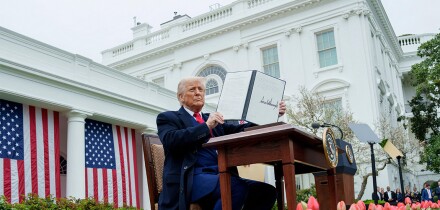This is the first of two articles that set out to demystify emissions trading. This week's article explains its origins and the framework and next week's will look at documentation and trading challenges.
UNFCCC
To understand the origins of emissions trading, it is necessary to look back to 1992. Then the concerns of the effect of human activity on the environment and consequent climate change culminated in the adoption of the United Nations Framework Convention on Climate Change in Rio de Janeiro. The UNFCCC, as the convention is called, came into force in 1994.
As an international agreement, it sets out an overall framework for intergovernmental efforts to tackle climate change. Establishing objectives and principles, the UNFCCC spells out in general terms commitments for different groups of countries, these commitments vary according to the circumstances and needs of the countries. For example, "Annex I Parties", which are essentially the industrialized countries that were members of the Organisation for Economic Co-operation and Development in 1992 and Economies in Transition (EITs) (such as the Russian Federation, the Baltic States and Eastern European States), are the only parties required by the convention to adopt climate change policies and measures to reduce greenhouse gas emissions. On the other hand, the UNFCCC recognized that developing countries had the right to economic development and, as one of its principles, provided that the specific needs and circumstances of developing countries should be given full consideration in any actions taken by the Annex I Parties.
As a framework agreement, the UNFCCC set out the process for future agreement on specific, binding actions, by the adoption of amendments or protocols to the convention.
Kyoto Protocol
Key among these protocols is the Kyoto Protocol. Six greenhouse gases are covered by the Kyoto Protocol, carbon dioxide (CO2), methane (CH4), nitrous oxide (N2O), hydrofuorocarbons (HFCs), perfluorocarbons (PFCs) and sulphur hexafluoride (SF6). The Kyoto Protocol had the same objective as the UNFCCC and built on its principles by implementing legally binding provisions.
One of these was to set emissions targets for Annex I Parties. Annex I Parties are required to reduce their greenhouse gas emissions by at least 5% below their 1990 levels between 2008-2012, and to show "demonstrable progress" in achieving this by 2005. The individual emissions targets for the Annex I Parties set out in Annex B to the Kyoto Protocol. EU member states, taking advantage of a provision of the Kyoto Protocol, which allowed a group of Annex I Parties to agree jointly to meet their emissions targets on an aggregate basis, agreed a redistribution of their overall reduction targets amongst themselves. This paved the way for the EU emissions trading scheme (EU ETS)
Aside from implementing green policies and measures in their home state to ensure they meet their emissions targets, Annex I Parties can reach their reduction targets by using any of the three mechanisms that have been built into the Kyoto Protocol to assist them. These are joint implementation (JI), clean development mechanism (CDM) and the concept of emissions trading. Detailed rules and procedures relating to these mechanisms were adopted at the Conference of Parties 7 held in Morocco in 2001. These provisions are referred to as the "Marrakesh Accords".
Joint Implementation
Joint implementation projects are projects undertaken by Annex I Parties in other Annex I Party countries (i.e. other developed countries or EITs) with the aim of reducing emissions or enhancing removal of emissions. In return, emission reduction units (ERUs) generated by a JI project can be used by the investing Annex I Parties to meet their emissions targets. This is a "win-win" mechanism as the projects also enable the host party to benefit from foreign investment and technology transfer.
Clean Development Mechanism
The CDM established in the Kyoto Protocol also allows Annex I Parties to implement emissions reducing projects in non-Annex I countries. Annex I Parties can use the certified emission reductions (CERs) these generate toward their own compliance.
Emissions Trading Under The Kyoto Protocol
Emissions trading was established in the Kyoto Protocol, with detailed rules and guidelines being adopted in the Marrakesh Accords. The whole concept of emissions trading under the Kyoto Protocol revolves around units of emissions or reductions of emissions such as the ERUs and CERs under the JI or CDM and how these are transferred by the parties. Key to understanding how the trading is to work is understanding the rules for accounting of "assigned amounts" under the Kyoto Protocol.
These "assigned amounts" are basically the individual or group emissions targets set out in Annex B to the Kyoto Protocol referred to above. Each Annex I Party is required, at the beginning of the commitment period and via its national registry, to issue a quantity of "assigned amount units" or "AAUs" equivalent to its assigned amount.
Each Annex I Party is also required to issue in its national registry "removal units" or "RMUs" equivalent to the net removals of greenhouse gases resulting from certain types of land-use change and forestry activities, which have been active since 1990. As with AAUs, each RMU also has a unique serial number.
These AAUs, RMUs, CERs and ERUs can then be traded between Annex I Parties. Acquisitions of these allow an Annex I Party to increase its emissions.
The quantity of AAUs, RMUs, CERs and ERUs held by an Annex I Party at the end of the commitment period and retired for such purposes is then compared against its actual aggregate emissions for the period.
In Force?
All that said is well and good, but is the Kyoto Protocol in force? Not yet, or perhaps never. Before the Kyoto Protocol can enter into force, at least 55 Parties to the Convention have to ratify it, including a sufficient number of Annex I Parties to encompass 55% of the Annex I Parties' aggregate carbon dioxide emissions in 1990.
The ratification process has met an impasse, in part due to the fact that the U.S. has not ratified it. It remains to be seen if Russia, the other Annex I Party with sufficient 1990 emissions to push the protocol through, will ratify it.
European Efforts--The EU ETS
The EU ETS is a "cap and trade" scheme. Member states are required to decide on the total quantity of allowances for each applicable period and allocate those allowances to operators of relevant installations. The first phase of the scheme runs from 2005-7 and the second phrase from 2008-12.
The only installations caught by the scheme in the first phase are carbon dioxide emitting facilities operating combustion installations, pulp and paper, cement and glass and steel plants above specified thresholds. Operators are required to surrender allowances equal to the total emissions of their installation in each calendar year and operators who fail to do so are "fined" with an excess emissions penalty of EUR40 (2005-7) and EUR100 (2008-12) for each ton of carbon dioxide equivalent emitted by that installation for which allowances are not surrendered. Further, the payment of the excess emissions penalty does not release the operator from the obligation to surrender the requisite amount of allowance the following calendar year.
EU ETS & The Kyoto Protocol
As it stands, it looks likely that the EU ETS will go ahead accordingly to plan, even if the Kyoto Protocol is not ratified. JI and CDM projects under the Kyoto Protocol will not come into existence unless the Protocol is ratified. Nevertheless, the European Commission submitted a proposal for a Directive in July 2003 to provide for a linking of the EU ETS with the credits produced by Kyoto Protocol mechanisms, known as the Linking Directive.
Under the proposed Linking Directive, operators under the EU ETS can obtain ERUs or CERs which they have either generated themselves or purchased on the market and convert them into allowances under the EU ETS. These allowances, issued by the relevant Member States in exchange for ERUs or CERs on a one-for-one basis, would be in addition to those allowances that are issued and allocated under the national allocation plans to operators under the EU ETS.
In the current EU Commission version of the proposed Linking Directive, the conversion of ERUs and CERs will only take effect following the entry into force of the Kyoto Protocol. Further, as the Kyoto Protocol only provides for CERs being used to achieve compliance with commitments in the 2008-12 period and ERUs being issued only after 2008, the EU Commission text currently contemplates that CERs and ERUs would not be exchangeable for allowances under the EU ETS for the first phase of the EU ETS scheme running from 2005 to 2007.
The key question now is whether the conversion mechanism provided for in the proposed Linking Directive should be dependent on whether the Kyoto Protocol is ratified and whether the EU should "act as though the Kyoto Protocol will enter into force". A secondary question is whether, to encourage industry from taking up CDM projects as soon as possible, CERs should be convertible during the first phase of the EU ETS between the 2005-7.
National Schemes
Each Member State will have to implement national legislation to put into force the provisions of the EU ETS and, when finalized, the Linking Directive. Whether all will do so by January 2005 remains to be seen.
There are currently several national emissions reduction and trading schemes in place, including the U.K. emissions trading scheme, which started in April 2002 and, in the U.S., the SO2 trading scheme. These schemes operate independently of, and outside, the ambit of the Kyoto Protocol and the EU ETS.
This week's learning curve was written by Lena Goh, associate, and Claude Brown, partner, at Clifford Chance in London.






